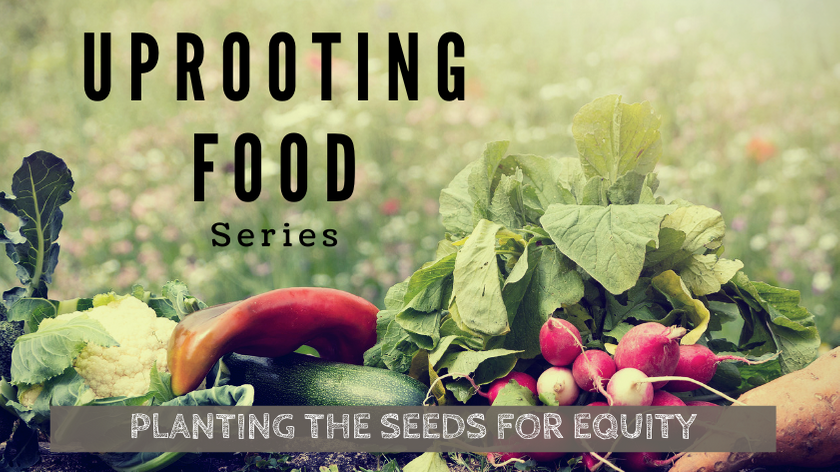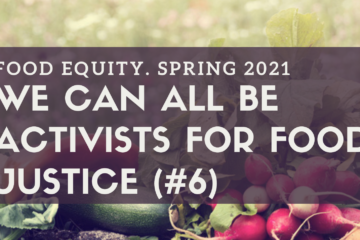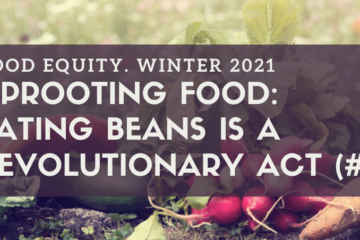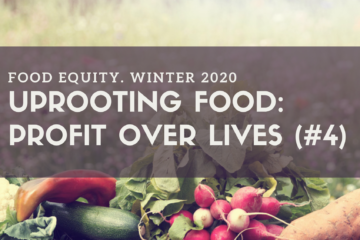
When we enter the grocery store we are overwhelmed with choices…or are we? Who really decides the products that line the selves? According to the US Federal Trade Commission:
- Ten companies control most of the grocery store products .
- Quaker Cereal is owned by PepsiCo.
- Kraft and General Foods are owned by the Philip Morris cigarette company.
- Corporate farms control 75% of agricultural production.
- Only 4 corporations control over 80% of the beef industry.
- 5 corporations control over 50% of grocery retail.
Something is happening between the farm, the factories and our family. Surely someone is watching that we have a choice and that the products we consume are safe and healthy. Isn’t the role of our government to protect the public good?
Who is watching out for public health?
The reality is that the “public” is not just the individual. Our government also looks out for the health—the financial health– of the corporate and farming systems now often referred to as Big Food.
The USDA and Department of Health and Human Services are the government agencies tasked with defining the Dietary Guidelines for health. They developed the Food Pyramid and My Plate concepts to help us choose a balance of nutritional foods.
Here is an excerpt from the vision statement of the USDA—United States Department of Agriculture—from their website:
We have a vision to provide economic opportunity through innovation, helping rural America to thrive; to promote agriculture production that better nourishes Americans while also helping feed others throughout the world.
It clearly notes the goal to support all three legs: the U.S. economy, agriculture, and individual nutrition. When one or two legs get stronger the balance of 3 goes awry. While the economy and agriculture are supported, what has happened to supporting individual nutrition and health?
One place where agriculture and economy are linked is in government farm subsidy programs. Since the Great Depression of the 1930’s the government has subsidized agriculture and paid farmers to grow certain crops. Initially created to help farmers survive and keep food production rolling, the subsidies now end up promoting growth of only certain foods. The cycle goes like this:
The government subsidizes corn, soybeans, wheat, rice (and cotton). Subsidies go to large corporate farms with “innovative” production processes. Those items become cheaper to raise. Fruits and vegetables become more expensive to raise. The cheaper products are pumped into as many processed foods as possible in the form of flour, oil and corn syrup. Cheap grains are fed to livestock so meat production is more efficient but less nutritious. Meat products are processed with added grains and corn syrup. The cycle compounds on itself and makes the products less nutritious.
What happens to individual health?
We tend to buy the products marketed to us and most readily available to us. Those processed foods make up half of the “standard American diet.” Fruits and vegetables make up less than 10%. Meat provides most of the rest. That diet doesn’t match the USDA guidelines for healthy nutrition!
The Nutrition Guidelines are made based on science and are reviewed every 5 years with decisions made by the USDA and Department of Health and Human Services. They are simple and clear: eat more fruits, vegetables, whole grains and lean proteins, and eat less foods with added sugars, processed foods, and meat.
Yet there are efforts, many in the form of lobbying pressure, to keep the recommendations vague and to keep the subsidies up. The money spent on lobbying is staggering whether or not lobbying is even effective in altering guidelines:
- In 2014 and 2015, nearly four dozen food and beverage companies and trade associations reported spending more than $77 million combined to lobby Congress on issues including the Dietary Guidelines
- Meat processing groups spent $4.5 million last 2 years lobbying Congress on issues including the Dietary Guidelines
- Since the beginning of 2018, the American Beverage Association (soda drinks) spent $1.68 million in lobbying expenses, joined by Red Bull North America at $320,000.
We are paying for poor health.
One can see how private interests hurt public good. Imagine what could be accomplished if that money was spent to support health. Yet It is OUR tax money that pays the subsidies and the government agencies that should be protecting us.
- We are paying to have fewer choices.
- We are paying to make food less nutritious, more highly processed, sweet and full of fat.
- We continue to pay when our health deteriorates in an epidemic of obesity, diabetes and other chronic diseases stemming from the typical American diet.
- We continue to pay by providing the cheap labor force within a racist system required by inexpensive farming and corporate processing.
- We all will continue to pay for the long term environmental consequences of short sighted production methods.. More on those issues in future articles.
We must “lobby” on behalf of our health.
What can we do as consumers? What can we do as health advocates? We must realize that we have been sold the processed diet as convenient and “padre”. Where we DO have a choice, we can make a conscious choice. Since money speaks, we must stop supporting products that do not meet our health goals…or our ethics. A true democracy is for all the people; not just the privileged few and corporations. We must demand that our health and well-being be what guides those in power rather than the profits that can be made from less nutritious food.
What’s Needed:
- Use your purchasing power to buy less processed food. Since the pandemic 83% of households say they are preparing more meals at home¹. Eating freshly prepared foods at home is good for your family’s health.
- Vote in your local elections to support city council candidates who are committed to food equity initiatives. Programs such as Healthy Corner Stores in San Antonio, TX are having success in reducing food deserts in low income neighborhoods leading to an increase in fresh produce consumption².
References
http://www.firstresearch.com/Industry-Research/Breakfast-Cereal-Manufacturing.html
¹-https://blog.fieldagent.net/coronavirus-diet-how-the-pandemic-is-impacting-eating-drinking-habits
Source: https://www.huffpost.com/entry/consumer-brands-owned-ten-companies-graphic_n_1458812
Note: this graphic is from 2017. There may have been acquisitions between companies in the meantime.


